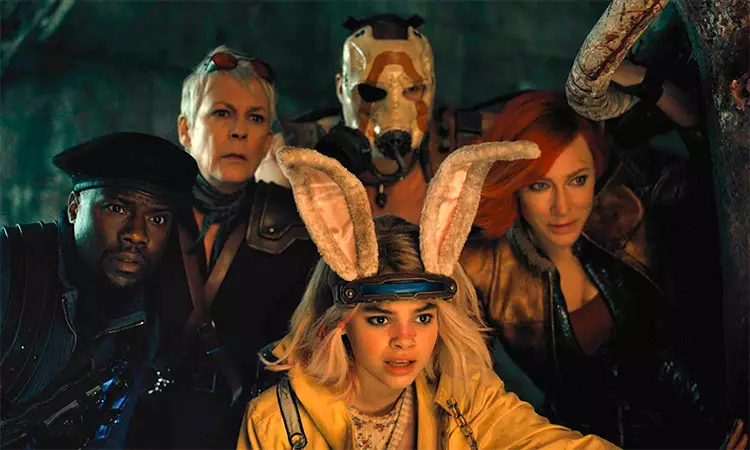In recent times, the jump from video games to film has proven to be a treacherous journey for many adaptations, with few managing to capture the essence of their source material. The excitement and engagement that gaming offers are inherently different from the passive experience of watching a movie. Despite some noteworthy successes, such as “The Last of Us” and “Sonic the Hedgehog,” the path is frequently littered with failures. The latest attempt, directed by Eli Roth, “Borderlands,” unfortunately falls into the category of poorly executed adaptations, reminding audiences of just how difficult it is to translate interactive experiences into cinematic storytelling.
“Borderlands” opens with a voiceover from Lilith, portrayed by the talented Cate Blanchett. A notorious outlaw, her character serves as the protagonist of this chaotic narrative set across various planets, particularly the infamous Pandora. Lilith is tasked with an urgent mission to find the daughter of Atlas, a powerful figure whose lineage holds the key to untold potential. This setup has all the makings of an engaging exploration of vast universes, complex characters, and high-stakes adventures. However, the screenplay does not rise to the occasion. Instead of delivering a tightly woven narrative filled with clever twists and character development, it offers a linear plot that lacks depth, ultimately leaving audiences feeling unfulfilled.
The film’s ensemble cast includes Hollywood heavyweights: Kevin Hart as the mercenary Roland, Jamie Lee Curtis as Tannis, and Jack Black as Claptrap, a robot serving as comic relief. While each actor brings a level of charisma to their roles, the screenplay does them a disservice. Characters feel more like caricatures rather than fully-fledged individuals with backgrounds, desires, and growth. The stakes seem low, and interactions between characters lack meaningful depth. For a project equipped with an impressive cast, the result is painfully generic and predictable.
Eli Roth, known for his horror films “Hostel” and “The Green Inferno,” was expected to bring a gritty edge to the adaptation. With a background that emphasizes violence and dark humor, it seemed plausible that Roth was an apt choice for capturing the raw energy inherent to the “Borderlands” universe. However, rather than entrenching the film in the game’s anarchic spirit, Roth appears to have miscalculated the balance between chaos and coherence. The result is an awkward blend of tone that oscillates between forced humor and lackluster action. In attempting to adhere to the game’s style, the film neglects fundamental storytelling techniques that underpin effective filmmaking.
The Visuals: When Special Effects Fall Flat
The visual elements of “Borderlands” are another critical area where the film falters. The use of special effects in a game-inspired project should enhance the whimsical and intense action scenes; unfortunately, the CGI is jarring and poorly executed. Several sequences feel rushed and lack the polish expected from modern cinematic endeavors. It’s evident that despite ambitious goals, the film’s visual aesthetic does not align with its narrative ambition.
The Reception: A Missed Connection with Fans
As with many video game adaptations, “Borderlands” faced scrutiny even before its release due to its fanbase’s inherent loyalty and expectations. Unlike other adaptations that have managed to appease critics and players alike, this film seems to have missed the mark entirely. Early discussions around the film suggested skepticism about its direction, which proved accurate as critics voiced concerns regarding its lack of originality and uninspired storytelling. This adaptation stands as a glaring reminder that even with star power and a beloved source material, the innate complexity of gaming does not always translate well to the silver screen.
The overwhelming evidence provided by “Borderlands” further solidifies the notion that the venture from game to film is a delicate pursuit filled with pitfalls. As creators persist in exploring this avenue, lessons must be learned from missteps like this. Adaptations must honor the very nature of the games they intend to portray—embracing their rich worlds, nuanced characters, and interactive experiences. Only then can future endeavors hope to rise above the rubble of failed attempts and create something that resonates with both gaming enthusiasts and film audiences. The challenge lies not merely in the visual fidelity but in the overall connection and storytelling. In a time when we witness innovative forms of narrative, the quest for a successful video game adaptation remains precarious yet crucial.

